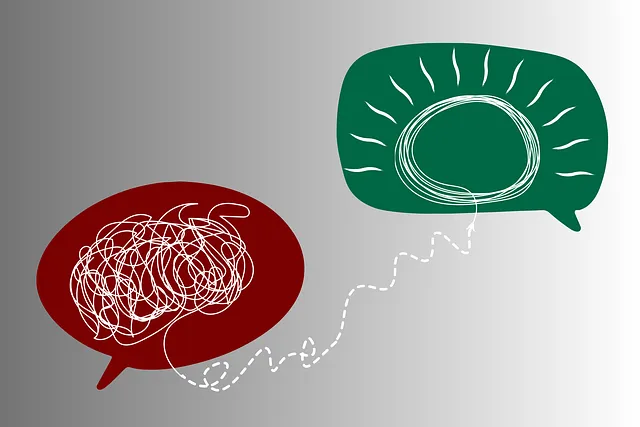Public awareness campaigns, led by organizations like Kaiser Permanente, transform societal attitudes towards mental health by educating and empowering individuals. In Colorado Springs, these campaigns promote strategies like positive thinking, mindfulness meditation, and self-care routines to reduce stigma, encourage early intervention, and enhance community resilience. Designing impactful campaigns involves strategic planning, including defining objectives, crafting tailored messages, selecting active channels (e.g., social media or workshops), implementing burnout prevention, and measuring success through analytics and feedback. Organizations like Kaiser Permanente effectively use multi-channel approaches, combining online resources, workshops, and community events to cater to diverse demographics and boost campaign impact. Measuring success includes changes in knowledge, attitudes, and behaviors related to the campaign's focus, ensuring campaigns drive meaningful mental health practice changes.
In today’s digital age, public awareness campaigns play a pivotal role in shaping societal attitudes and behaviors. From mental health initiatives like those offered by Kaiser Permanente psychiatry in Colorado Springs to environmental consciousness, effective campaigns have the power to inform, engage, and inspire action. This article guides you through understanding the essence of these campaigns, designing strategic approaches, selecting optimal communication channels, and evaluating success—all crucial aspects for maximizing impact, much like finding the right psychiatric care through a dedicated phone number.
- Understanding Public Awareness Campaigns: Their Role and Impact in Society
- Designing Effective Campaign Strategies: A Step-by-Step Guide
- Choosing the Right Channels: Media and Communication Tactics for Maximum Reach
- Measuring Success: Evaluation Metrics and Methods for Public Awareness Campaigns
Understanding Public Awareness Campaigns: Their Role and Impact in Society

Public awareness campaigns play a pivotal role in shaping societal perceptions and behaviors related to mental health. These initiatives, often led by organizations like Kaiser Permanente, aim to educate and empower individuals to take charge of their well-being. By reaching out to communities through various channels, they dispel myths and promote understanding, fostering an environment conducive to open conversations about mental health challenges.
In the context of Colorado Springs, these campaigns encourage the adoption of practices such as positive thinking, mindfulness meditation, and self-care routine development. These strategies not only help individuals manage stress and anxiety but also offer long-term solutions for better mental health. The impact is far-reaching, potentially reducing stigma, encouraging early intervention, and ultimately improving the overall mental resilience of the community, ensuring a healthier and more supportive society.
Designing Effective Campaign Strategies: A Step-by-Step Guide

Designing effective public awareness campaigns requires a structured approach. Start by identifying the target audience and the key message you want to convey. Research their needs, preferences, and behaviors to tailor your strategy accordingly. For instance, when promoting mental health services like Kaiser Permanente psychiatry phone number Colorado Springs, understanding local demographics and cultural nuances is essential.
A step-by-step guide includes: (1) Define campaign objectives; (2) Develop engaging content that resonates with the audience, incorporating storytelling and personal narratives to humanize your cause; (3) Choose suitable channels – social media, events, or workshops like Stress Management Workshops Organization – based on where your target group is most active; (4) Implement Burnout Prevention Strategies for Healthcare Providers to ensure sustainability and relevance; (5) Measure success through analytics and feedback, adjusting the campaign as needed. Regular evaluation ensures your message Coping Skills Development effectively reaches and impacts the intended community.
Choosing the Right Channels: Media and Communication Tactics for Maximum Reach

When developing public awareness campaigns, strategically choosing communication channels is key to reaching a wide audience. In today’s digital age, various media platforms offer unprecedented opportunities for maximum impact. For instance, leveraging social media can help spread messages quickly, especially when tailored content engages users through storytelling and interactive elements. Similarly, traditional media such as television and radio remain powerful tools, offering broad coverage and the ability to capture diverse audiences, including those in rural or underserved areas.
In the context of mental health initiatives, targeted campaigns can address specific challenges like burnout prevention among healthcare professionals. Organizations like Kaiser Permanente, with a psychiatry phone number in Colorado Springs, have successfully utilized multi-channel approaches. They often incorporate online resources, workshops, and community events to promote self-esteem improvement and risk management planning for mental health professionals. This omnichannel strategy ensures that messages resonate with different demographics and cater to various learning styles, ultimately enhancing campaign effectiveness.
Measuring Success: Evaluation Metrics and Methods for Public Awareness Campaigns

Measuring success is a critical aspect of public awareness campaigns, enabling organizations to understand their impact and adjust strategies accordingly. For initiatives focusing on mental health and well-being, such as those promoted by organizations like Kaiser Permanente psychiatry in Colorado Springs, evaluation metrics should go beyond simple reach and engagement. Key performance indicators (KPIs) should include changes in knowledge, attitudes, and behaviors related to the campaign’s focus.
For instance, a campaign advocating for Stress Management Workshops Organization might measure success through pre- and post-campaign surveys gauging participants’ understanding of stress management techniques and their willingness to implement them. Additionally, tracking the adoption of emotional healing processes and resilience building among target audiences over time can demonstrate the long-term effectiveness of such campaigns. These evaluation methods ensure that efforts are not only reaching communities but also fostering meaningful changes in mental health practices.
Public awareness campaigns are powerful tools for driving societal change and improvement. By understanding their role, strategically designing initiatives, and utilizing the right communication channels, we can effectively address various issues. This article has provided a comprehensive guide, from defining campaign goals to measuring success, ensuring that efforts like those at Kaiser Permanente psychiatry in Colorado Springs achieve tangible results. Remember, when executed well, public awareness campaigns have the potential to create lasting impacts and shape a better future for all.






